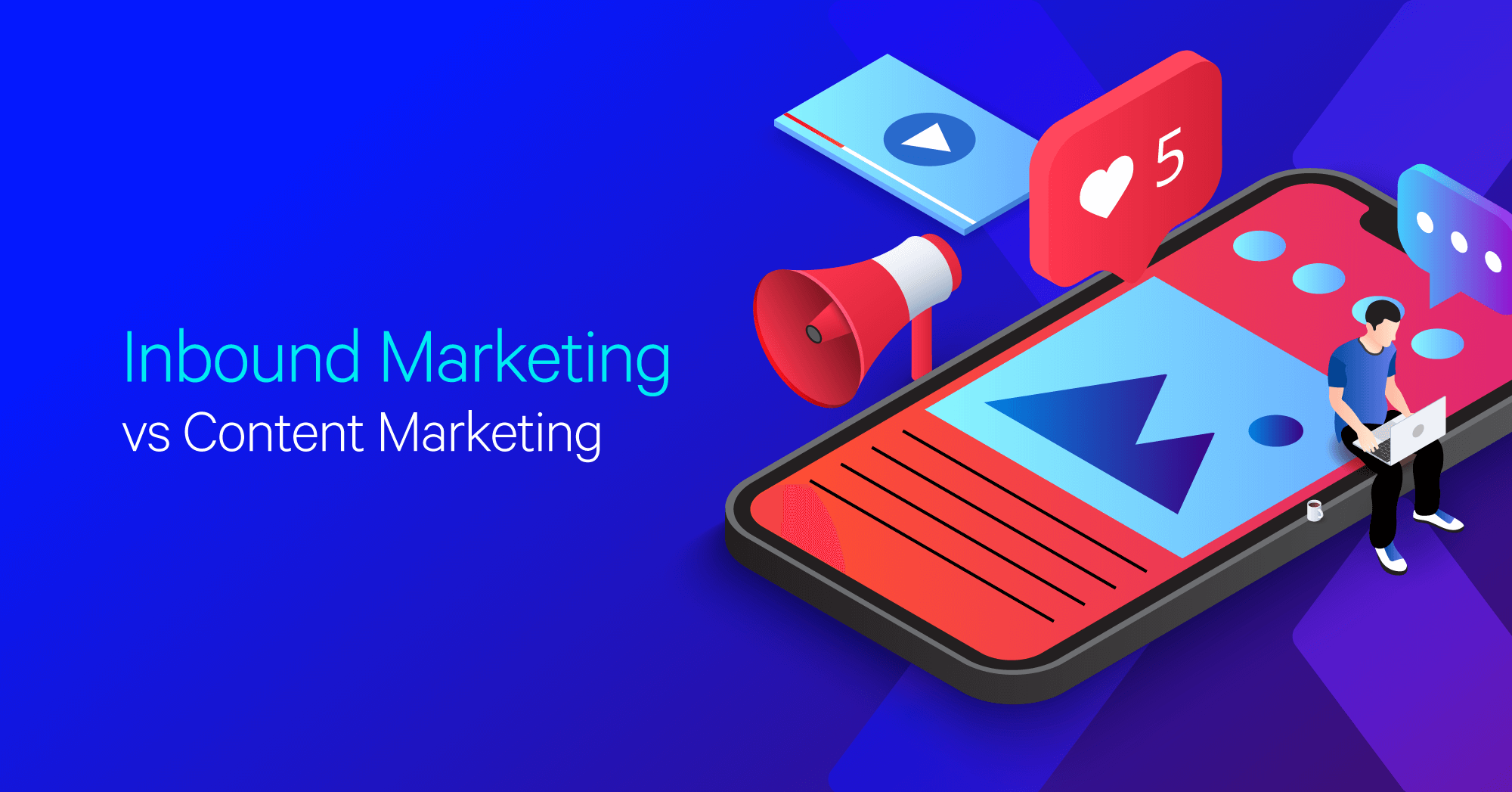Inbound Marketing vs Content Marketing: Key Differences

Hand off the toughest tasks in SEO, PPC, and content without compromising quality
Explore ServicesInbound marketing and content marketing are mentioned a lot in discussions of top marketing campaigns. They both involve attracting consumers rather than hitting them with ads. That can make them surprisingly effective with segments of the market that are very hard to reach
You need to understand the difference between the two so that you can put the right plans and people into place.
In this guide, you’ll learn what both of these concepts mean, and the advantages and disadvantages of inbound marketing vs. content marketing when they’re used independently of one another.
Inbound Marketing vs Content Marketing
Inbound marketing is a method of drawing in customers with tempting information and custom experiences. Content marketing refers to strategies where valuable types of content are used to develop brands or products.
Quality content + SEO research
You tell us the keywords you want to target, and we’ll analyze the SERPs, research your keywords then write the content your audience (+ Google) wants to see.
If those sound confusingly close, don’t worry—it takes a few more details to easily tell them apart. They are closely related, but the differences do matter. Let’s look at both of them in a little more detail.
What is inbound marketing?
Inbound marketing focuses on the process of guiding prospects to become visitors, buyers, and finally, promoters of a brand. The trust and gratitude of customers can be earned through the use of excellent content, less-obtrusive site design, or highly-responsive customer service.
Campaigns may involve many different recommendations based on the condition of your site and content assets. The following goals may be part of a first-time campaign.
- Developing a sales funnel to theorize and test where visitors are on their buying journey
- Customizing visitor experiences by developing different landers for each referring source
- Optimizing websites and cart widgets to remove obstacles or inconveniences
Inbound marketing has several advantages and disadvantages:
Advantages
- Build better relationships: These campaigns form a superior first connection to each customer compared to other types of intrusive advertising. People who arrive on your site are receptive because they’re interested in your message.
- Cumulative: There are dozens of ways to apply inbound marketing principles both onsite and offsite. It takes a large budget to apply them all in a short time, but it’s just as effective to apply them over a long time with a limited monthly budget. Unlike a completed ad campaign, inbound upgrades continue to pay off.
Disadvantages
- Slow start: Managing an inbound marketing campaign takes a lot of asset development and research. You shouldn’t expect to see results quickly unless your site is already well-built to handle these campaigns.
- Requires constant refinement: Successful inbound marketing campaigns track the behavior of visitors very closely to look for areas to improve. It can take a lot of testing to even get moderate returns. Though some inbound optimization can be done quickly, most strategies will rely on several months to build momentum.
What is content marketing?
Content marketing refers to using content to develop lasting relationships and drive behavior from online consumers. It is narrowly focused on the development of content—including detailed guides, infographics, and videos—to make impressions.
Why is content marketing important? Direct advertising is not often featured in content marketing campaigns because the idea is to attract the customer on the proposition of value. The content may (over thousands of impressions) be used to boost the reputation of a brand, turn a site into a hub, or educate about new products.
Advantages
- Reaches jaded consumers: People are very effective at tuning out audio ads or blocking pop-ups. Even the customers you reach with ads may be annoyed by them. One of the benefits of content marketing is that content is a much better way of connecting with visitors.
- Good content can be an asset for years: A strong piece of content can be widely linked for years to come. If you manage to create something truly valuable, it will outlive the campaign that created it.
Disadvantages
- Costly research and development: The signature content pieces that are used for content marketing campaigns can cost a lot to develop, and they need to be well-researched to be effective.
- Sensitive to some signals: Some of these campaigns, including those using the hub and spoke model, are currently effective because well-connected topics also effective for SEO. However, Google and other search engines can tweak the rules at will.
What’s the difference between inbound marketing and content marketing?
The difference between inbound marketing and content marketing is that content marketing is focused only on content. Inbound marketing is a more holistic way of working toward the same goals.
Inbound marketing is a methodology, content marketing is more of a tactic
Inbound marketing is an almost philosophical look at how your customers relate to your presence. Anything from your site’s color scheme to which cart widget that you have installed may fall under an inbound optimization plan.
On the other hand, content marketing is a way of rolling out a piece of content to achieve a certain goal. The campaigns usually involve one (or several) signature pieces of content, then buildouts to promote those pieces.
Inbound marketing is more timeless
Inbound marketing is not bound to any specific tactic. As technology and conditions change, so can the practices that are used in inbound marketing campaigns.
Content marketing is currently a major part of inbound campaigns, but it may be sensitive to changes in SEO or consumer tolerance for lengthy content.
Summary
Now you understand the differences between inbound marketing and content marketing. Either of these campaigns can help you develop better connections with your customers. They share many goals, though it’s possible to build a campaign that includes one but not the other.
Both are scalable. You can manage inbound marketing or content marketing for small business budgets. They are also both capable of making full use of enterprise budgets.
Hand off the toughest tasks in SEO, PPC, and content without compromising quality
Explore ServicesWritten by Adam Steele on September 2, 2020
COO and Product Director at Loganix. Recovering SEO, now focused on the understanding how Loganix can make the work-lives of SEO and agency folks more enjoyable, and profitable. Writing from beautiful Vancouver, British Columbia.





